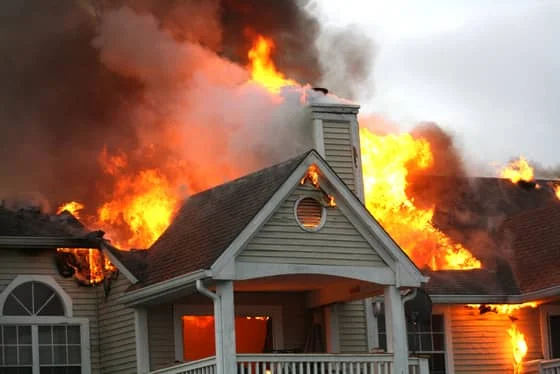Fire-damaged houses can still pose numerous health risks to homeowners even after they have been restored. This is because fire restoration companies do not always perform a thorough job. 3 risks of living in a fire-damaged home include potential exposure to toxic chemicals, structural weaknesses, and lingering smoke odors that can affect your health. Always keep these risks in mind when deciding if repairing or selling your fire-damaged house after a fire is the best option.
Fire Damage and Structural Integrity
Fires can damage the infrastructure of a home in ways that are not always easy to detect. Any fire over 482 degrees Fahrenheit will weaken every type of building material except for timber. The average house fire is 1,100 degrees Fahrenheit, much more than the minimum needed to cause serious damage.
A housefire that’s significant enough to cause the family to relocate for restoration is probably also significant enough to cause a structural weakening of the home . . . sometimes permanently.
Be wary of moving back into a fire-damaged home that still has:
- Charred wood
- Cracked bricks or concrete
- Warped or cracked steel
Smoke Damage from Fire
We all know not to breathe smoke during a fire, but did you know toxic chemicals can still reside in the home after a fire? 3 risks of living in a fire-damaged home include exposure to soot that contains toxic microscopic particles from various burnt materials. These hazardous particles easily travel throughout the house and find their way into air ducts, on top of nail heads, and even in supposedly enclosed spaces such as dresser drawers and empty wall cavities. This highlights the importance of being aware of the hidden dangers and taking necessary precautions or considering other options for your living situation post-fire.
If a fire restoration company fails to remove every last toxic particle from the home, health complications from constantly breathing soot include:
- Respiratory problems
- Eye irritation
- Rashes
Mold-Damaged Homes
The fire extinguishers used to put out a blaze can actually cause the moist conditions needed to promote mold growth. The Environmental Protection Agency says that mold can spread within as little as 24 hours of prolonged moisture within the home. Mold can cause serious health problems in both allergic and non-allergic individuals.
If the fire restoration company does not remove all of the mold, potential health complications include:
- Ear, nose and throat irritation
- Rash
- Severe allergic reaction
Fire Restoration Companies Are Not Always Efficient
If a fire restoration company is not thorough, it could be a long time before the homeowners find out. Sometimes a family will not connect their seemingly unrelated health concerns until after soot, mold and other unresolved problems are discovered much later. By then, the fire restoration company could be out of business and unreachable.
Selling Your House After a Fire is Often the Safest Option
Many people choose to sell their house after a fire instead of leaving their health in the hands of a fire restoration company. If you are ready to sell your fire-damaged house after a fire instead of worrying about smoke damage from fire, mold and other issues, then consider selling your fire-damaged home with We Buy Damaged Houses.
We Buy Damaged Houses is a national company that buys homes for cash, so to sell your house quickly (within a week or less), call 1-800-267-2360 today.

